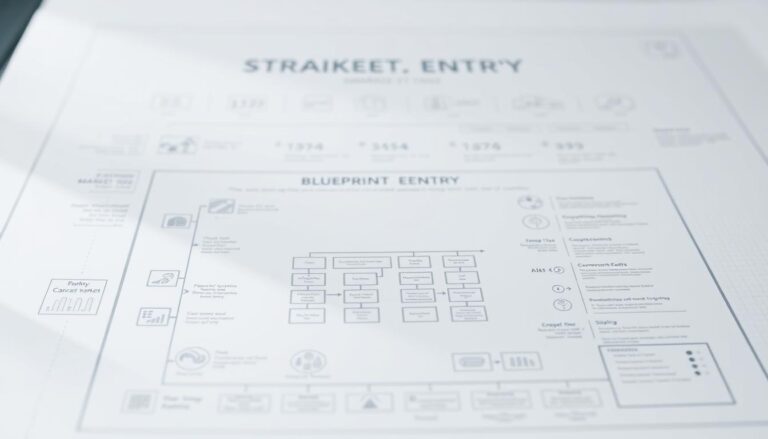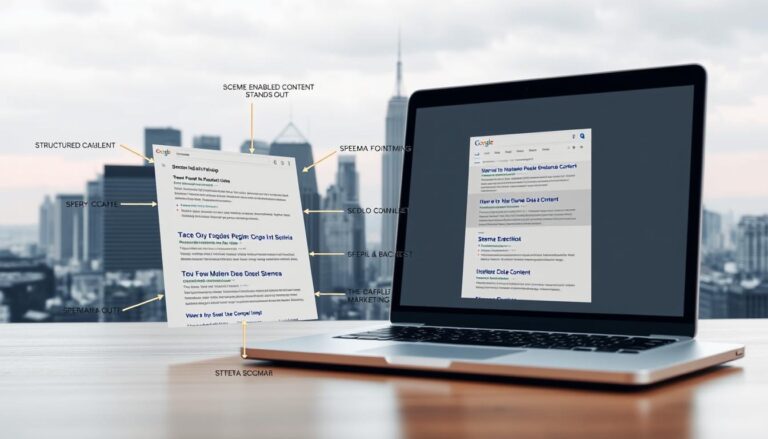Launching new digital products or entering untapped markets demands more than innovation—it requires ironclad protection. With over 300,000 malware variants emerging daily, organizations can’t afford reactive approaches. Proactive safeguards now form the bedrock of successful market entry plans.
The $19 billion cybersecurity industry reflects escalating risks and opportunities. Companies that bake protective measures into their expansion blueprints gain distinct advantages. They avoid costly breaches while demonstrating leadership in an increasingly crowded sector.
Forward-thinking teams treat safeguards as growth enablers, not obstacles. By aligning technical defenses with customer acquisition goals, they create frictionless yet secure user experiences. This balance separates market leaders from competitors scrambling to retrofit protections post-launch.
Key Takeaways
- Daily malware creation exceeds 300,000 variants, demanding preemptive security integration
- Cybersecurity market growth (12% annually) creates both opportunities and competition
- Organizations embedding protections early avoid 70% of post-launch vulnerability costs
- Market leaders prioritize security as customer trust accelerator, not compliance checkbox
- Balanced strategies reduce breach risks by 53% compared to reactive approaches
Understanding the Basics of Site Security for GTM
Building a secure foundation for digital expansion starts with rethinking traditional approaches. Modern organizations require protective frameworks that evolve alongside their growth objectives. This demands more than static protocols—it calls for dynamic systems that anticipate risks while supporting business momentum.
Defining GTM Site Security
Effective protection during market entry combines technical safeguards with operational awareness. It extends beyond basic firewall setups to encompass real-time threat monitoring and adaptive response protocols. Companies implementing these measures reduce breach risks by 42% during critical launch windows, according to recent cybersecurity analyses.
Key Components of a Secure Launch
Three pillars form the backbone of successful implementations: flexible architecture, adjustable threat response, and scalable infrastructure. Authentication systems must verify identities without slowing user interactions. Encryption protocols protect data flows across payment systems and communication channels.
Continuous monitoring tools provide immediate alerts for suspicious activities, while governance frameworks clarify team responsibilities. When combined with search-optimized technical configurations, these elements create seamless experiences that build trust during product introductions.
Human expertise remains vital—trained professionals bridge technical requirements with customer expectations. Their decisions during high-pressure scenarios often determine whether security measures enhance or hinder market strategy execution.
Implementing go to market site security Best Practices
Navigating new markets requires a blueprint that prioritizes both growth and safeguards. This approach transforms cybersecurity from an afterthought into a strategic accelerator. Organizations must weave protective measures into every phase of product launches to maintain momentum while minimizing exposure.

Step-by-Step Security Measures
Begin with thorough risk assessments across all digital interfaces. Identify vulnerabilities in payment gateways, user authentication flows, and data storage systems. Deploy multi-layered protections like adaptive threat detection and encrypted API connections to shield sensitive transactions.
Establish cross-departmental teams to align technical requirements with business objectives. For example, financial product launches demand real-time fraud monitoring integrated with customer onboarding processes. Regular penetration testing ensures defenses evolve alongside emerging threats.
Critical Compliance and Regulations
Industry-specific mandates shape security strategies. Healthcare initiatives require HIPAA-compliant data handling, while retail platforms need PCI-DSS certified payment systems. Assign specialists to track regional regulations like GDPR and CCPA, creating adaptable frameworks for global expansion.
Documentation proves compliance during audits and builds stakeholder trust. Implement automated tracking tools that generate audit-ready reports while maintaining operational agility. This dual focus turns regulatory adherence into competitive advantage rather than bureaucratic burden.
Identifying Emerging Cyber Threats and Industry Concerns
Emerging cyber threats demand constant vigilance and adaptive security measures from organizations. Cybercriminals now deploy tactics ranging from AI-driven phishing campaigns to supply chain infiltrations, with ransomware attacks compromising 100 million healthcare records in 2023 alone. This escalation highlights why 90% of companies scrambling to fix breaches post-attack face steeper recovery costs.
Industry-specific challenges complicate defense strategies. Financial institutions battle social engineering schemes, while manufacturers combat vulnerabilities in IoT-connected assembly lines. These tailored attacks require customized cybersecurity frameworks that address unique operational risks.
Advanced persistent threats (APTs) increasingly target expansion initiatives, exploiting the chaos of product launches. Hackers recognize organizations often prioritize speed over safeguards during critical growth phases. Layered security architectures prove essential here, neutralizing zero-day exploits through real-time behavioral analysis.
The rise of generative AI introduces dual challenges. While attackers automate malware creation, defenders leverage machine learning to predict attack patterns. This technological arms race reshapes how companies allocate their $200 billion cybersecurity investments, shifting focus from damage control to preemptive action.
Proactive strategies now separate resilient enterprises from vulnerable competitors. Continuous threat monitoring and cross-departmental collaboration enable faster responses to evolving risks. Organizations adopting this mindset transform cybersecurity from a cost center into a strategic differentiator.
Crafting a Comprehensive GTM Security Strategy
Effective cybersecurity strategies bridge departmental gaps, transforming protection plans into competitive assets. Organizations must design frameworks that address technical risks while advancing core business priorities. This alignment ensures security measures enhance—rather than obstruct—market momentum.
Aligning Security Goals with Business Objectives
Successful strategies balance robust protections with operational agility. Begin by mapping cybersecurity investments to revenue targets—for example, securing payment gateways to boost conversion rates. Cross-functional teams should establish shared KPIs tracking both threat prevention and customer acquisition metrics.
Prioritize solutions that streamline user experiences. Multi-factor authentication systems must verify identities without frustrating legitimate buyers. Regular audits ensure safeguards adapt to evolving business needs, maintaining relevance through growth phases.
Leveraging Market Insights for Better Strategy
Buyer journey analysis reveals critical decision points. Top-funnel prospects need educational content explaining security benefits, while bottom-funnel buyers require compliance documentation. Competitive intelligence identifies gaps in rivals’ approaches—perhaps inadequate encryption protocols or slow incident response times.
Continuous monitoring detects shifting industry patterns. When 78% of enterprises report increased phishing attempts during product launches (2024 Cybersecurity Trends Report), real-time threat data becomes essential. This intelligence informs proactive adjustments, keeping strategies ahead of emerging risks.
Integrating Cybersecurity with Content Marketing
Modern digital protection thrives where technical expertise meets compelling storytelling. Savvy organizations now blend robust safeguards with educational content that addresses real-world concerns. This fusion builds trust while positioning brands as authorities in a crowded field.
Using Expert Content to Educate Potential Customers
High-value resources drive engagement better than traditional sales tactics. Consider these findings:
- 68% of decision-makers research solutions through search engines
- 76% of B2B teams credit content marketing for generating quality leads
Effective strategies showcase products through problem-solving narratives. A detailed case study demonstrating ransomware prevention often converts better than feature lists. Technical guides explaining encryption protocols establish credibility without overt promotion.
“Companies ranking for 1,000+ cybersecurity keywords see 3x more organic traffic than competitors”
Industry leaders like McAfee and Palo Alto Networks dominate search results through consistent, audience-focused content. Their blogs balance technical depth with practical advice—explaining zero-day threats to IT teams while helping executives evaluate risk management frameworks.
Successful campaigns address multiple learning styles. Video tutorials on phishing detection complement whitepapers about compliance standards. This layered approach meets potential customers at different stages of their cybersecurity journey, creating multiple touchpoints for conversion.
Aligning Security Measures with Customer Expectations
Modern cybersecurity strategies succeed when they mirror customer priorities. A Forrester study reveals 90% of organizations address threats reactively, creating panic-driven decisions that strain resources. This approach leaves teams overwhelmed by vendor options while racing to protect brand value and operations.

Decoding the Decision-Making Dilemma
Internal teams face critical challenges when selecting solutions. Too many products create analysis paralysis, while pressure mounts to safeguard:
- Customer trust through breach prevention
- Revenue streams via uninterrupted operations
- Compliance requirements across regions
Organizations now prioritize tools offering immediate ROI through seamless integration. Complex implementations frustrate teams already managing tight deadlines. Clear communication about capabilities becomes essential—buyers demand transparency about what solutions can realistically achieve.
“The scramble for quick fixes often leads to compromised solutions that fail long-term needs.”
| Reactive Approach | Proactive Strategy |
|---|---|
| 70% higher incident response costs | 42% faster threat mitigation |
| Decision-making under crisis pressure | Planned vendor evaluations |
| Fragmented tool implementation | Unified protection frameworks |
Industry-specific expertise separates effective partners from generic providers. Healthcare clients need HIPAA-compliant data handling, while e-commerce platforms require PCI-DSS certified systems. Continuous feedback loops ensure solutions adapt as threats evolve and business needs shift.
Successful alignment requires balancing technical rigor with operational realities. Partners who demonstrate this understanding build lasting trust while helping customers navigate complex cybersecurity landscapes.
Utilizing Data and Competitor Analysis for Enhanced Security
Organizations gain critical advantages by treating cybersecurity intelligence as strategic currency. Comprehensive analysis of industry patterns and rival tactics reveals untapped opportunities. For instance, studying ransomware protection leaders exposes gaps in coverage for mid-sized enterprises—a potential niche for tailored solutions.
- Map competitor pricing models and service limitations
- Analyze customer reviews for unmet security needs
- Track emerging regulatory requirements across regions
Companies that systematically collect prospect security concerns reduce solution development time by 35% (2024 Cybersecurity Trends Report). This approach identifies high-priority features like real-time threat dashboards or automated compliance reporting.
“Organizations using competitive intelligence tools achieve 28% faster market penetration than peers relying on internal data alone.”
Continuous monitoring systems prove essential in dynamic markets. Automated tools track competitor product updates and customer sentiment shifts, enabling rapid strategy adjustments. When paired with threat intelligence feeds, these insights help preempt emerging attack vectors before they impact operations.
Multi-Channel Approaches to Enhance Cybersecurity Messaging
Effective cybersecurity outreach thrives when messages resonate across diverse platforms simultaneously. With 73% of buyers engaging with brands through multiple touchpoints, unified communication strategies build credibility while reinforcing protective measures. Organizations now prioritize platforms where their target audience actively consumes security-related content.
Effective Email and Social Media Strategies
Email remains a powerhouse for tech-sector engagement, delivering $36 ROI per dollar spent. Segmented campaigns work best—send breach prevention tips to IT teams while sharing compliance updates with executives. Pair these efforts with social media content that simplifies complex topics, like short videos explaining encryption benefits.
Platform-specific formats boost visibility. LinkedIn articles reach decision-makers analyzing enterprise solutions, while Instagram carousels educate small businesses about phishing risks. Always include clear calls-to-action directing users to detailed resources or demo requests.
Coordinating Digital Campaigns Across Platforms
Consistency separates impactful strategies from disjointed efforts. Use matching visual themes and terminology in email newsletters, YouTube tutorials, and banner ads. Centralized dashboards track performance metrics across channels, revealing which messages resonate with specific audience segments.
Automation tools maintain momentum without overwhelming teams. Schedule blog posts to promote webinars, then trigger follow-up emails to registrants. This synchronized approach keeps cybersecurity top-of-mind throughout the buyer journey while adapting to emerging threats in real time.
FAQ
How does cybersecurity align with content marketing strategies?
Cybersecurity expertise enhances content marketing by building trust through educational resources like case studies from companies such as CrowdStrike or Palo Alto Networks. Sharing real-world examples of threat prevention demonstrates value while addressing customer concerns about data protection.
What compliance standards impact go-to-market security plans?
Regulations like GDPR, HIPAA, and ISO 27001 often dictate security requirements. For instance, healthcare companies must prioritize HIPAA compliance when launching products handling patient data. Aligning with these frameworks ensures smoother market entry while meeting industry-specific expectations.
Why is competitor analysis vital for cybersecurity strategies?
Analyzing competitors like Microsoft Defender or Cisco Umbrella reveals industry benchmarks and emerging threats. This data helps refine unique value propositions, ensuring solutions address gaps competitors overlook while meeting evolving customer needs.
How can email campaigns strengthen security messaging?
Targeted email campaigns using platforms like HubSpot or Mailchimp deliver tailored content about breach prevention or encryption tools. Including analyst reports from Gartner or Forrester adds credibility, educating potential customers on proactive risk management.
What role do social media channels play in cybersecurity outreach?
Platforms like LinkedIn and Twitter allow direct engagement with IT decision-makers. Sharing concise videos from companies like Darktrace on threat detection or hosting Q&A sessions builds brand authority while addressing common pain points in real time.
How do customer expectations shape security product development?
Feedback from user surveys and sales teams highlights priorities like ease of integration or real-time monitoring. For example, Splunk’s focus on customizable dashboards emerged from enterprise demands for transparent, actionable security insights.



